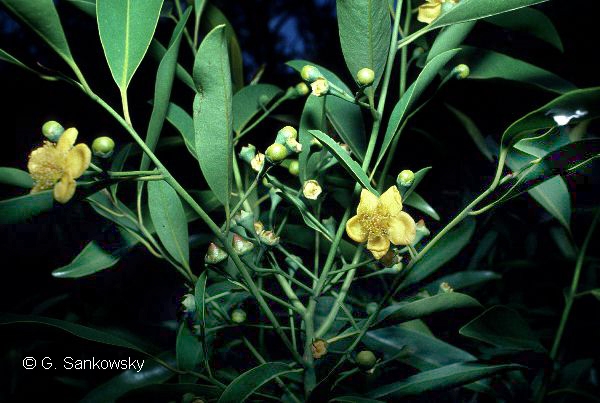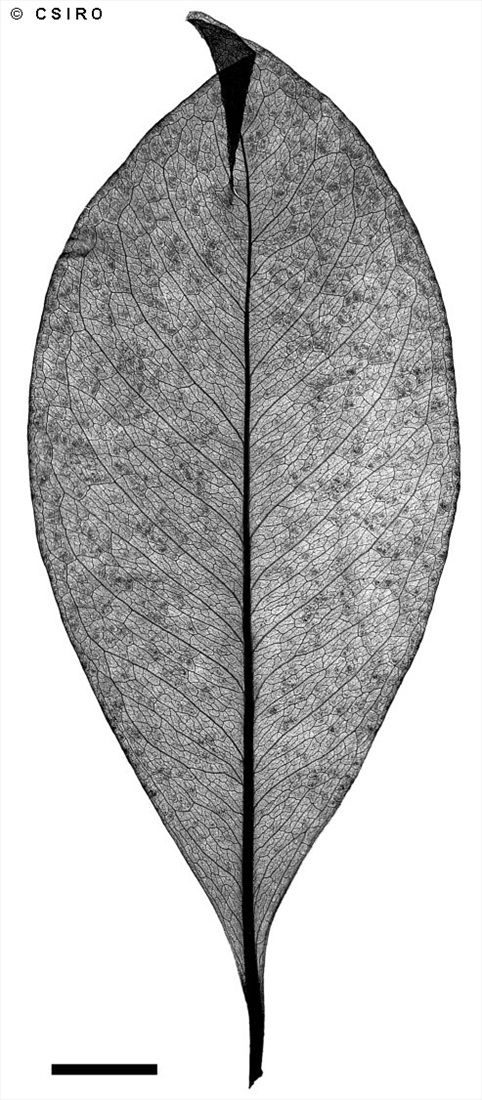Australian Tropical Rainforest Plants - Online edition
Welchiodendron longivalve (F.Muell.) Peter G.Wilson & J.T.Waterh.






Wilson, Peter G. & Waterhouse, J.T. (1982) Australian Journal of Botany 30: 441.
Buttercup Tree; Yellow Box Penda
Fine, cream or yellowish, hard, brittle stripes in the blaze. Blaze quite fibrous.
Fruits about 12-16 x 7-11 mm, calyx lobes persistent at the top of the fruit. Seeds winged, about 7-8 mm long. Cotyledons convolute.
Cotyledons +/- reniform, bilobed, about 3-4 x 7-8 mm, broadly emarginate at the apex. Oil dots very small, more numerous about the margins. At the tenth leaf stage: leaf blade elliptic or obovate, apex acute or obtuse, base attenuate, glabrous; oil dots numerous, visible with a lens; stem 4-winged. Seed germination time 16 to 17 days.
Occurs in CYP. Altitudinal range from sea level to 150 m. Usually grows in open eucalypt forest but also found in monsoon forest, beach forest and the margins of drier seasonal rain forest. Also occurs in New Guinea.





